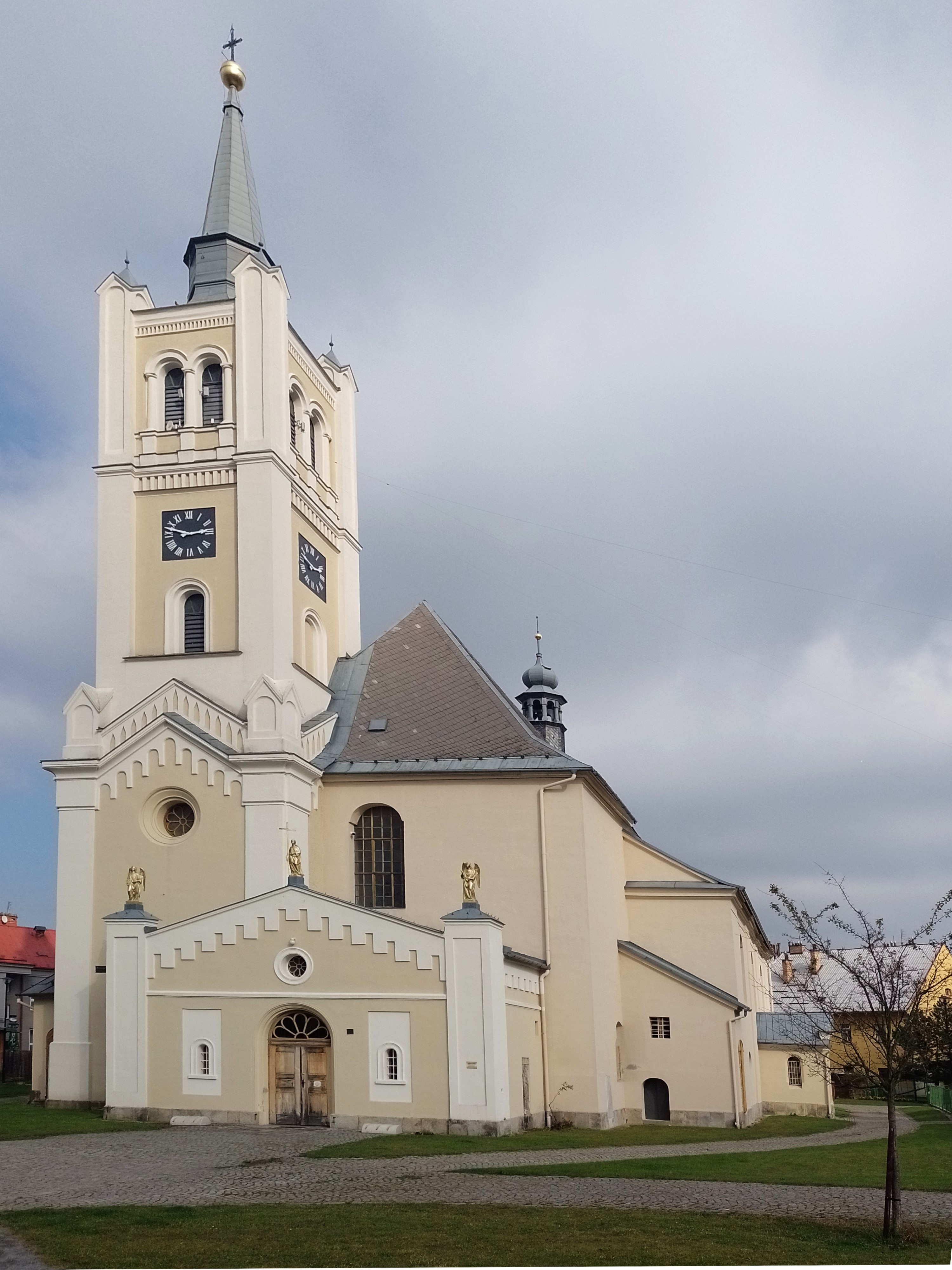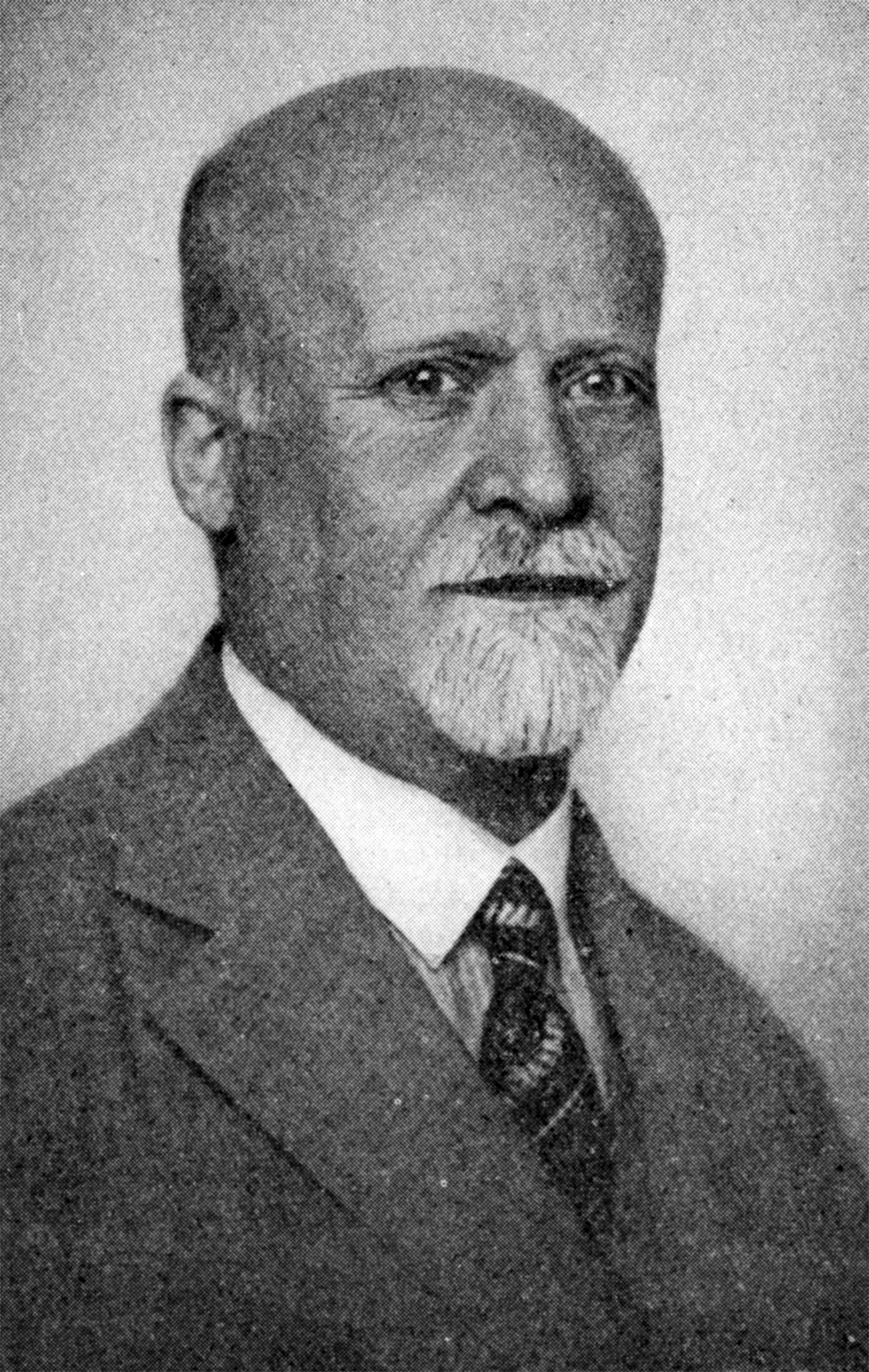|
Friedrich Karl Max Vierhapper
Friedrich Karl Max Vierhapper (7 March 1876 in Weidenau – 11 July 1932) was an Austrian plant collector, botanist and professor of botany at the University of Vienna. He was the son of amateur botanist Friedrich Vierhapper (1844–1903), botanical abbreviation- "F.Vierh.". Background From 1894 to 1899, he studied natural sciences at the University of Vienna, where he later worked as an assistant to Richard Wettstein at the botanical institute. From 1911 to 1932 he was an honorary professor at the school of veterinary medicine in Vienna. In the meantime, from 1918 he was employed as an associate professor of systematic botany at the University of Vienna. He specialized in research of botanical species native to Austria, Switzerland and Greece. During his career, he collaborated with botanist August von Hayek (1871-1928) on plant-collecting excursions. He processed and described flora collected from an expedition by the Vienna Academy of Sciences to southern Arabia and Socotr ... [...More Info...] [...Related Items...] OR: [Wikipedia] [Google] [Baidu] |
Vidnava
Vidnava (, pl, Widnawa) is a town in Jeseník District in the Olomouc Region of the Czech Republic. It has about 1,200 inhabitants. The historic town centre is well preserved and is protected by law as an urban monument zone. Etymology The town's name is derived from the name of the Vidnavka River. The name of the river has its origin in ''vidět'' (i.e. "to see"), which was derived from the clear water through which it could be seen. Geography Vidnava lies approximately north of Jeseník, north of Olomouc, and east of Prague. Vidnava is located on the border with Poland. It lies in the Silesian Lowlands, on the right bank of the river Vidnavka. History The first written mention of Vidnava is from 1291. The town prospered until the Hussite Wars, during which it was conquered and burned. Vidnava did not recover until the early 16th century, when there was a boom in crafts. The town was again destroyed by a large fire in 1574, and then during the Thirty Years' War. The histo ... [...More Info...] [...Related Items...] OR: [Wikipedia] [Google] [Baidu] |
Heinrich Von Handel-Mazzetti
Heinrich Raphael Eduard Freiherr von Handel-Mazzetti (19 February 1882 in Vienna – 1 February 1940) was an Austrian botanist best known for his many publications on the flora of China and botanical explorations of that country. He was the cousin of novelist Enrica von Handel-Mazzetti (1871-1955). Life He studied botany at the University of Vienna, obtaining his doctorate in 1907. From 1905 he served as an assistant at the botanical institute in Vienna. In 1925 he was appointed curator to the Natural History Museum. His earlier research involved scientific excursions to Switzerland (1906), Bosnia and Herzegovina (1909), followed by an expedition to Mesopotamia and Kurdistan (1910). On behalf of the Austrian Academy of Sciences, he traveled to China in 1914, performing botanical research in the provinces of Yunnan (1914, 1915, 1916), Sichuan (1914), Guizhou (1917), Hunan (1917, 1918), and Kweichow. In China he also undertook cartographic surveys. He returned to Vienna in 1919 ... [...More Info...] [...Related Items...] OR: [Wikipedia] [Google] [Baidu] |
Academics Of The University Of Vienna
An academy (Attic Greek: Ἀκαδήμεια; Koine Greek Ἀκαδημία) is an institution of secondary or tertiary higher learning (and generally also research or honorary membership). The name traces back to Plato's school of philosophy, founded approximately 385 BC at Akademia, a sanctuary of Athena, the goddess of wisdom and skill, north of Athens, Greece. Etymology The word comes from the ''Academy'' in ancient Greece, which derives from the Athenian hero, ''Akademos''. Outside the city walls of Athens, the gymnasium was made famous by Plato as a center of learning. The sacred space, dedicated to the goddess of wisdom, Athena, had formerly been an olive grove, hence the expression "the groves of Academe". In these gardens, the philosopher Plato conversed with followers. Plato developed his sessions into a method of teaching philosophy and in 387 BC, established what is known today as the Old Academy. By extension, ''academia'' has come to mean the accumulation, d ... [...More Info...] [...Related Items...] OR: [Wikipedia] [Google] [Baidu] |
Royal Botanic Gardens, Kew
Royal Botanic Gardens, Kew is a non-departmental public body in the United Kingdom sponsored by the Department for Environment, Food and Rural Affairs. An internationally important botanical research and education institution, it employs 1,100 staff. Its board of trustees is chaired by Dame Amelia Fawcett. The organisation manages botanic gardens at Kew in Richmond upon Thames in south-west London, and at Wakehurst, a National Trust property in Sussex which is home to the internationally important Millennium Seed Bank, whose scientists work with partner organisations in more than 95 countries. Kew, jointly with the Forestry Commission, founded Bedgebury National Pinetum in Kent in 1923, specialising in growing conifers. In 1994, the Castle Howard Arboretum Trust, which runs the Yorkshire Arboretum, was formed as a partnership between Kew and the Castle Howard Estate. In 2019, the organisation had 2,316,699 public visitors at Kew, and 312,813 at Wakehurst. Its site at Kew ... [...More Info...] [...Related Items...] OR: [Wikipedia] [Google] [Baidu] |
Salzburg
Salzburg (, ; literally "Salt-Castle"; bar, Soizbuag, label=Bavarian language, Austro-Bavarian) is the List of cities and towns in Austria, fourth-largest city in Austria. In 2020, it had a population of 156,872. The town is on the site of the Roman settlement of ''Iuvavum''. Salzburg was founded as an episcopal see in 696 and became a Prince-Archbishopric of Salzburg, seat of the archbishop in 798. Its main sources of income were salt extraction, trade, and gold mining. The fortress of Hohensalzburg Fortress, Hohensalzburg, one of the largest medieval fortresses in Europe, dates from the 11th century. In the 17th century, Salzburg became a center of the Counter-Reformation, with monasteries and numerous Baroque churches built. Historic Centre of the City of Salzburg, Salzburg's historic center (German language, German: ''Altstadt'') is renowned for its Baroque architecture and is one of the best-preserved city centers north of the Alps. The historic center was enlisted as a UN ... [...More Info...] [...Related Items...] OR: [Wikipedia] [Google] [Baidu] |
Lungau
Bezirk Tamsweg is an administrative district (''Bezirk'') in the federal state of Salzburg, Austria. It is congruent with the Lungau region (). The administrative centre of the district is Tamsweg. Geography The area of the Lungau plateau is 1,019.69 km², with a population of 21,283 (May 15, 2001), and population density 21 persons per km². It is located within the Central Eastern Alps, confined by the Hohe Tauern (High Tauern) range in the west, the Niedere Tauern (Low Tauern) in the north, and the Gurktal Alps (Nock Mountains) in the south. The region is separated from the Salzburg Pongau region by the Radstädter Tauern Pass crossing the Niedere Tauern. In the south, the Katschberg Pass road leads to the neighbouring state of Carinthia. Since 1974, the Tauern Autobahn underpasses both ranges via the Tauern Road Tunnel and the Katschberg Tunnel. In the east, the upper Mur River, originating near Muhr, flows towards Murau in Styria, accompanied by the narrow-gauge ... [...More Info...] [...Related Items...] OR: [Wikipedia] [Google] [Baidu] |
Crete
Crete ( el, Κρήτη, translit=, Modern: , Ancient: ) is the largest and most populous of the Greek islands, the 88th largest island in the world and the fifth largest island in the Mediterranean Sea, after Sicily, Sardinia, Cyprus, and Corsica. Crete rests about south of the Greek mainland, and about southwest of Anatolia. Crete has an area of and a coastline of 1,046 km (650 mi). It bounds the southern border of the Aegean Sea, with the Sea of Crete (or North Cretan Sea) to the north and the Libyan Sea (or South Cretan Sea) to the south. Crete and a number of islands and islets that surround it constitute the Region of Crete ( el, Περιφέρεια Κρήτης, links=no), which is the southernmost of the 13 top-level administrative units of Greece, and the fifth most populous of Greece's regions. Its capital and largest city is Heraklion, on the north shore of the island. , the region had a population of 636,504. The Dodecanese are located to the no ... [...More Info...] [...Related Items...] OR: [Wikipedia] [Google] [Baidu] |
Conifers
Conifers are a group of cone-bearing seed plants, a subset of gymnosperms. Scientifically, they make up the division Pinophyta (), also known as Coniferophyta () or Coniferae. The division contains a single extant class, Pinopsida. All extant conifers are perennial woody plants with secondary growth. The great majority are trees, though a few are shrubs. Examples include cedars, Douglas-firs, cypresses, firs, junipers, kauri, larches, pines, hemlocks, redwoods, spruces, and yews.Campbell, Reece, "Phylum Coniferophyta". Biology. 7th. 2005. Print. P. 595 As of 1998, the division Pinophyta was estimated to contain eight families, 68 genera, and 629 living species. Although the total number of species is relatively small, conifers are ecologically important. They are the dominant plants over large areas of land, most notably the taiga of the Northern Hemisphere, but also in similar cool climates in mountains further south. Boreal conifers have many wintertime adaptations. The ... [...More Info...] [...Related Items...] OR: [Wikipedia] [Google] [Baidu] |
Abd Al Kuri
Abd al Kuri ( ar, عبد الكوري) is a rocky island in the Guardafui Channel. As a part of the Socotra Archipelago of the Socotra Governorate of Yemen, it lies about 65 miles (105 km) southwest of the island of Socotra."ʿAbd al-Kūrī." Encyclopædia Britannica. Encyclopædia Britannica Online. Encyclopædia Britannica, 2011. Web. 6 October 2011. It consists of and covered by |
Samhah
Samhah or Samha ( ar, سمحة) is an inhabited island in the Guardafui Channel. A part of the Socotra archipelago, it is located between the island of Socotra and Somalia. Like the whole group, it belongs to Yemen and is part of Socotra Governorate. There is a dispute between Yemen and Somalia's government over the island's sovereignty. Statistics It measures in area, making it the smallest of the three inhabited islands of the group, after the main island of Socotra and Abd al Kuri. The population of some 100 lives in a village on the western part of the north coast. Samhah and neighboring Darsah ( to the east) are collectively known as "Al Akhawain" ( ar, الأخوين) which means "The Brothers". The island of Samhah measures in length and in width. Important Bird Area The island of Samhah (along with neighbouring Darsa) has been recognised as an Important Bird Area (IBA) by BirdLife International because it supports breeding Jouanin's petrel Jouanin's petrel (''Bulwer ... [...More Info...] [...Related Items...] OR: [Wikipedia] [Google] [Baidu] |
Karl Linsbauer
Karl Linsbauer (11 October 1872, Vienna – 5 December 1934, Graz) was an Austrian botanist and plant physiologist. He studied natural sciences at the University of Vienna, where he was a disciple of Julius Wiesner. In 1899 he earned his PhD, obtaining his habilitation several years later in the fields of plant anatomy and physiology Physiology (; ) is the scientific study of functions and mechanisms in a living system. As a sub-discipline of biology, physiology focuses on how organisms, organ systems, individual organs, cells, and biomolecules carry out the chemical ... (1904). In 1910 he became an associate professor at the University of Czernowitz, relocating the following year to the University of Graz as a successor to Gottlieb Haberlandt. Selected works * ''Bau und Leben der Pflanzen : in zwölf gemeinverständliche Vorträge'' (with Friedrich Karl Max Vierhapper) Verlag von Carl Konegen, Vienna, (1905) - Construction and biology of plants; in twelve eas ... [...More Info...] [...Related Items...] OR: [Wikipedia] [Google] [Baidu] |




